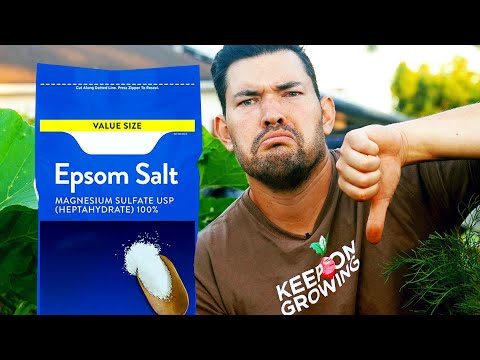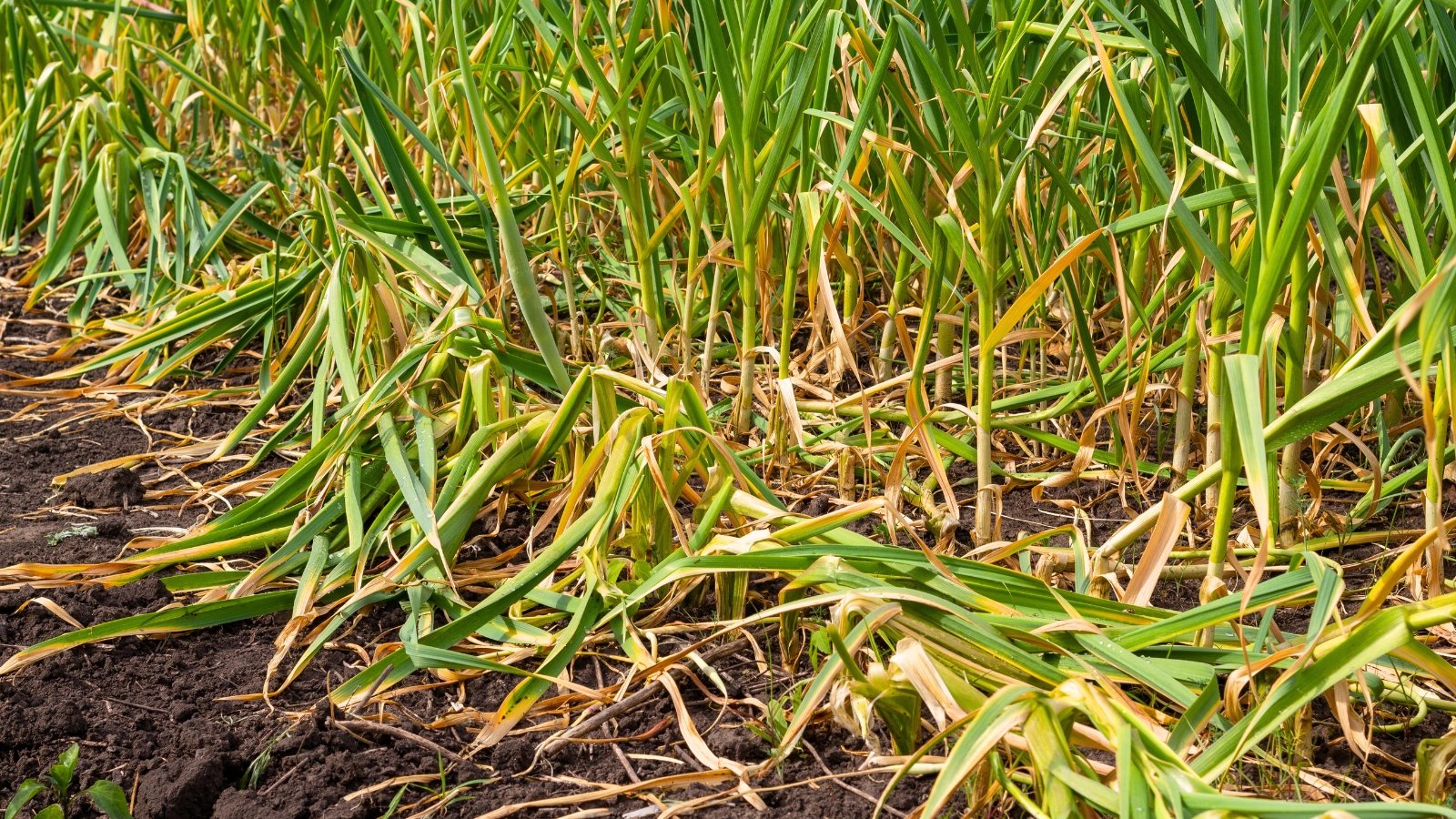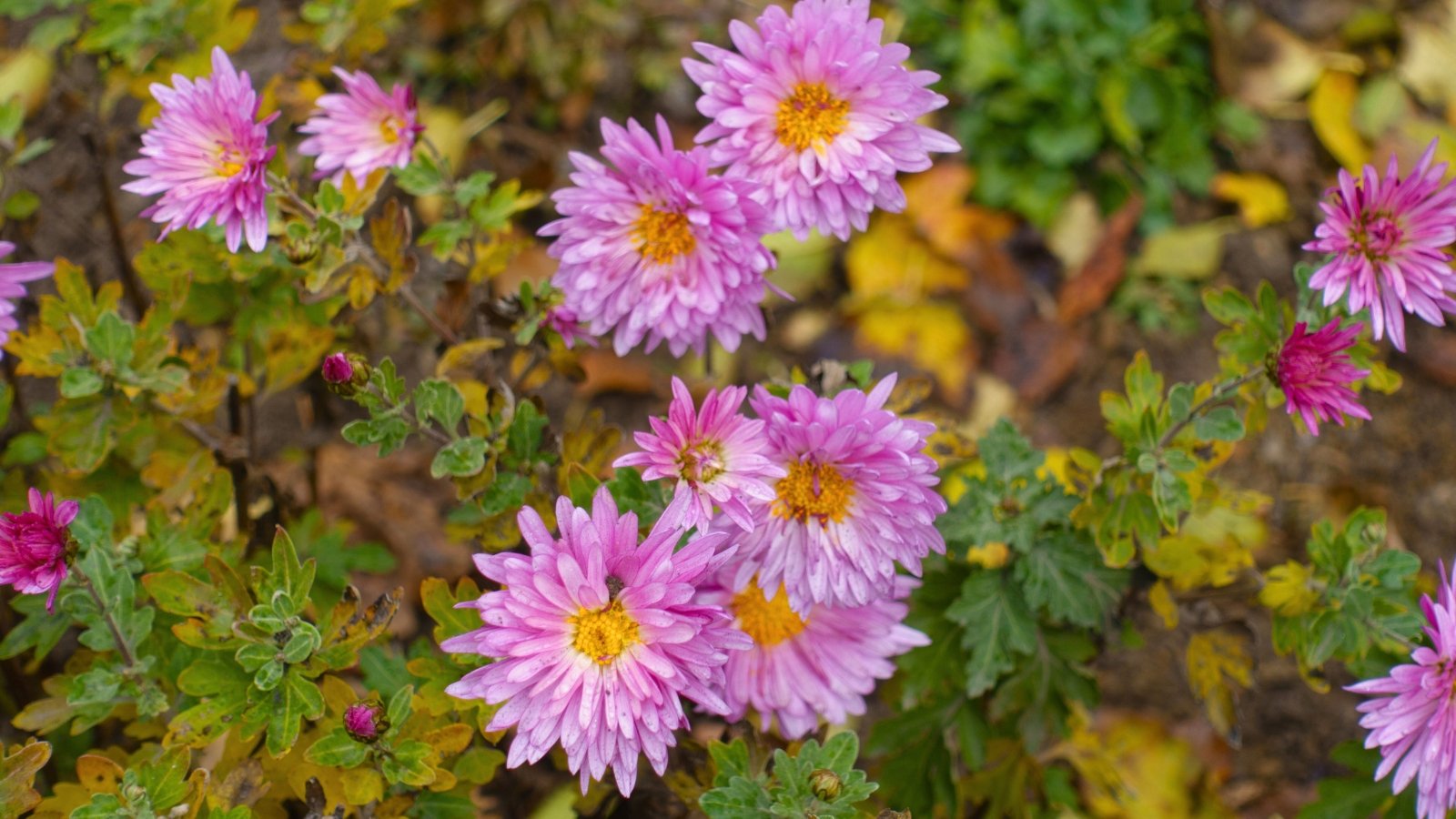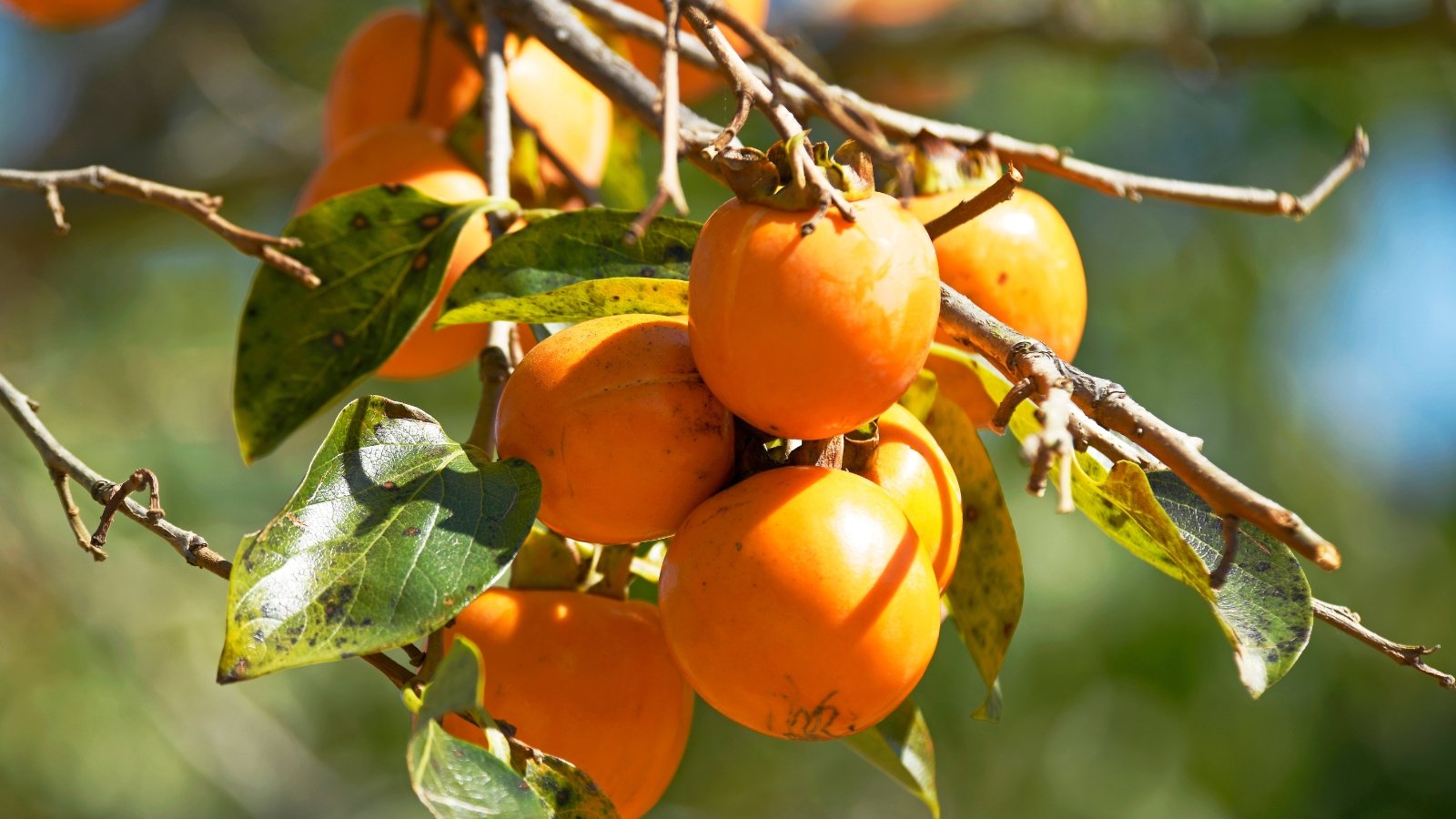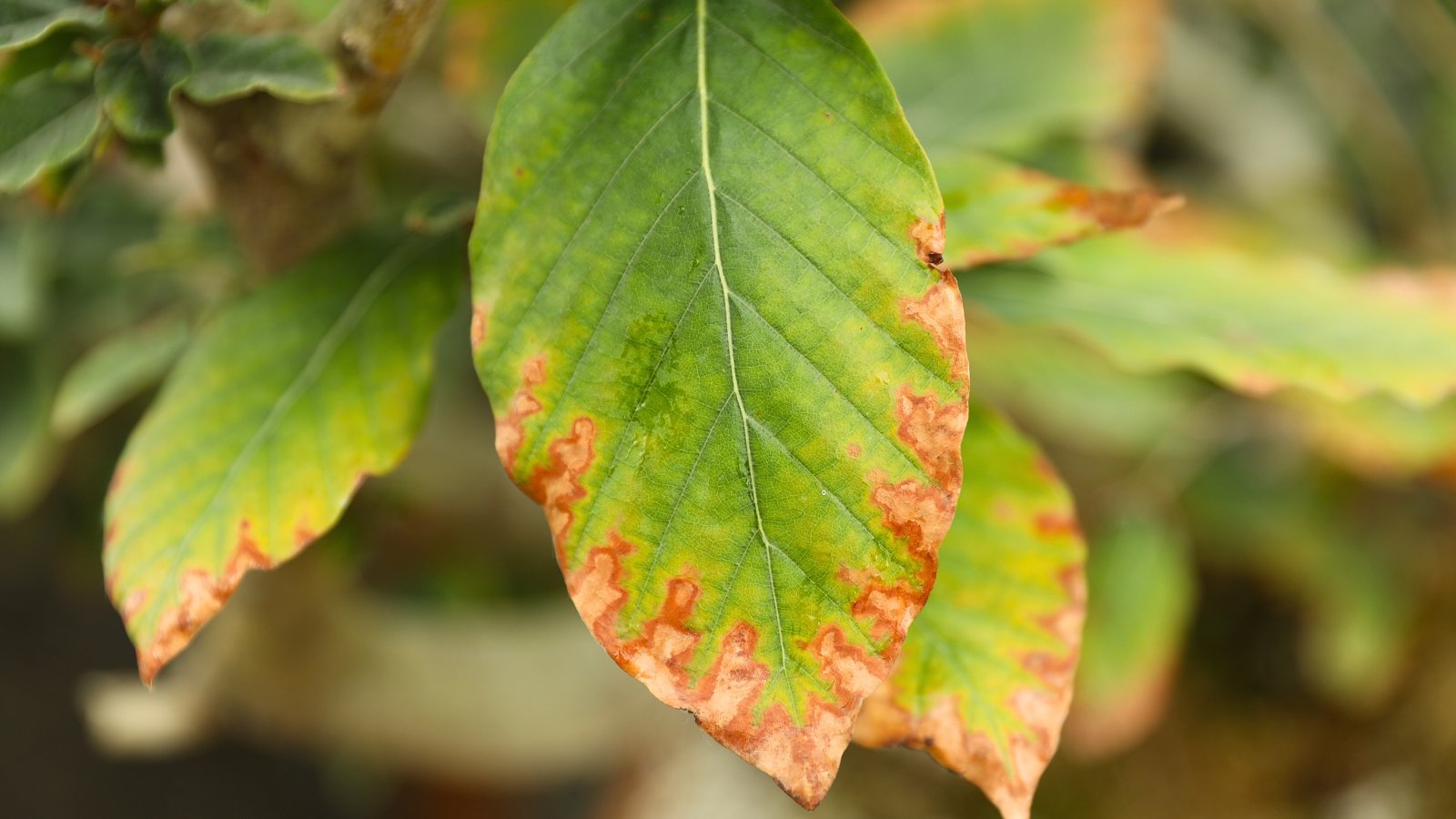
What’s Salt Burn in Vegetation?
[ad_1]
Salt burn isn’t solely a darkish comedy-thriller film starring Barry Keoghan; it’s moreover a detrimental state of affairs for vegetation! And that’s nothing to chuckle at.
To basically get into the science proper right here—the two elements making up salt (sodium and chloride) work in tandem to displace necessary nutritional vitamins and dehydrate vegetation. When salt dissolves, the chloride and sodium ions separate. As a substitute of taking on nutritional vitamins like potassium and phosphorus (the P and Okay of NPK), the plant takes up chloride and sodium, resulting in nutrient deficiencies. Chloride ions then make their method into foliage, inflicting seen indicators like leaf burn and dieback.
Sooner than we get into the article, I’d want to make a distinction: there are some gardening myths mentioning the utilization of epsom salt, additionally known as magnesium sulfate. To clarify, this product is simply not actually salt; it’s made up of magnesium, sulfur, and oxygen. Whereas it acquired’t give your vegetation salt burn, we nonetheless don’t advocate using it in most eventualities.
The state of affairs has many causes, ranging from environmental to man-made. On this text, I’ll make clear why and the best way it happens, the causes, indicators, prevention ideas, and some salt-tolerant species.
The Fast Reply
Salt burn is when the absorption of salt disrupts a plant’s means to take up water. Salt burn or stress has indicators, along with browning or scorched leaves, deformed progress, and premature fall shade on evergreens. This example has many causes, along with sea spray, further fertilizer, softened water, and avenue salt. This example impacts almost every plant kind, with houseplants being notably inclined. The good news is it is treatable most of the time.
Within the occasion you’ll be able to’t steer clear of it or reside in a coastal native climate, various species of bushes, shrubs, grasses, and completely different perennials and crops are tolerant.
The Prolonged Reply
Diving deeper into this example, you’ll study the best way and why it happens, what indicators to watch out for, learn to forestall and take care of it, and some tolerant vegetation.
Indicators
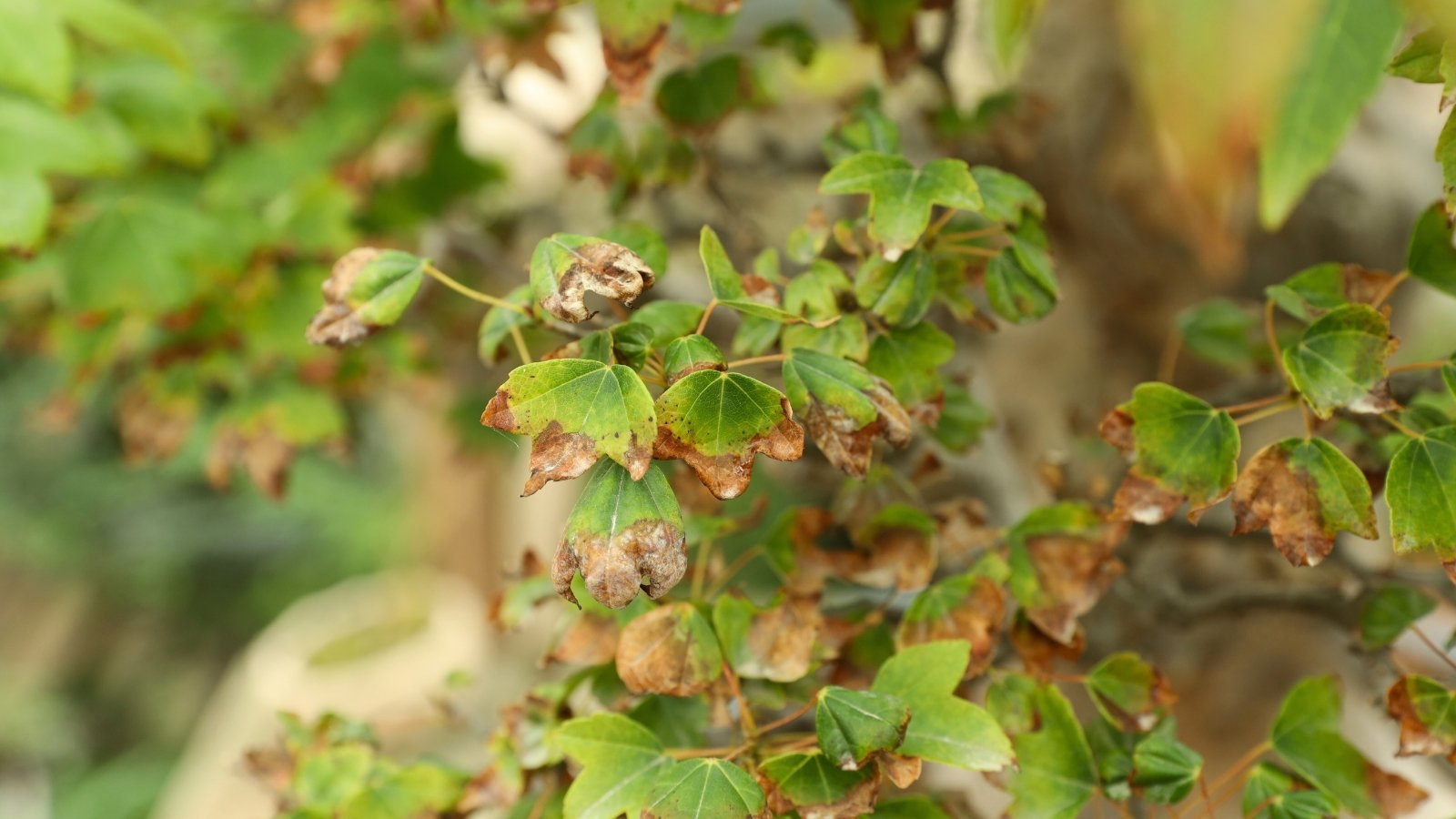

Listed below are various the indicators to have a look at for:
- Yellow leaves
- Premature fall shade or leaf drop
- Discolored, small, and lowered foliage
- Crusty white buildup on the soil ground
- Bowned or burned needle tips on conifers
- Marginal leaf burn (browning of the perimeter and ideas of leaves)
- Delayed or stunted enchancment of buds, fruits, and flowers
- Hurt, distortion, or dying of buds, twigs, and stems
- Witches’-broom deformity
- Hurt is barely in a single area (i.e. the side of the plant coping with a avenue the place salt is utilized in winter)
- Diminished whole progress
This plant state of affairs has many indicators, just a few of which might mimic nutrient deficiencies. Sooner than leaping for the fertilizer, I prefer to advocate rigorously considering any cultural conditions: the place are your crops? How usually are you fertilizing them?
Why Does Salt Burn Happen?
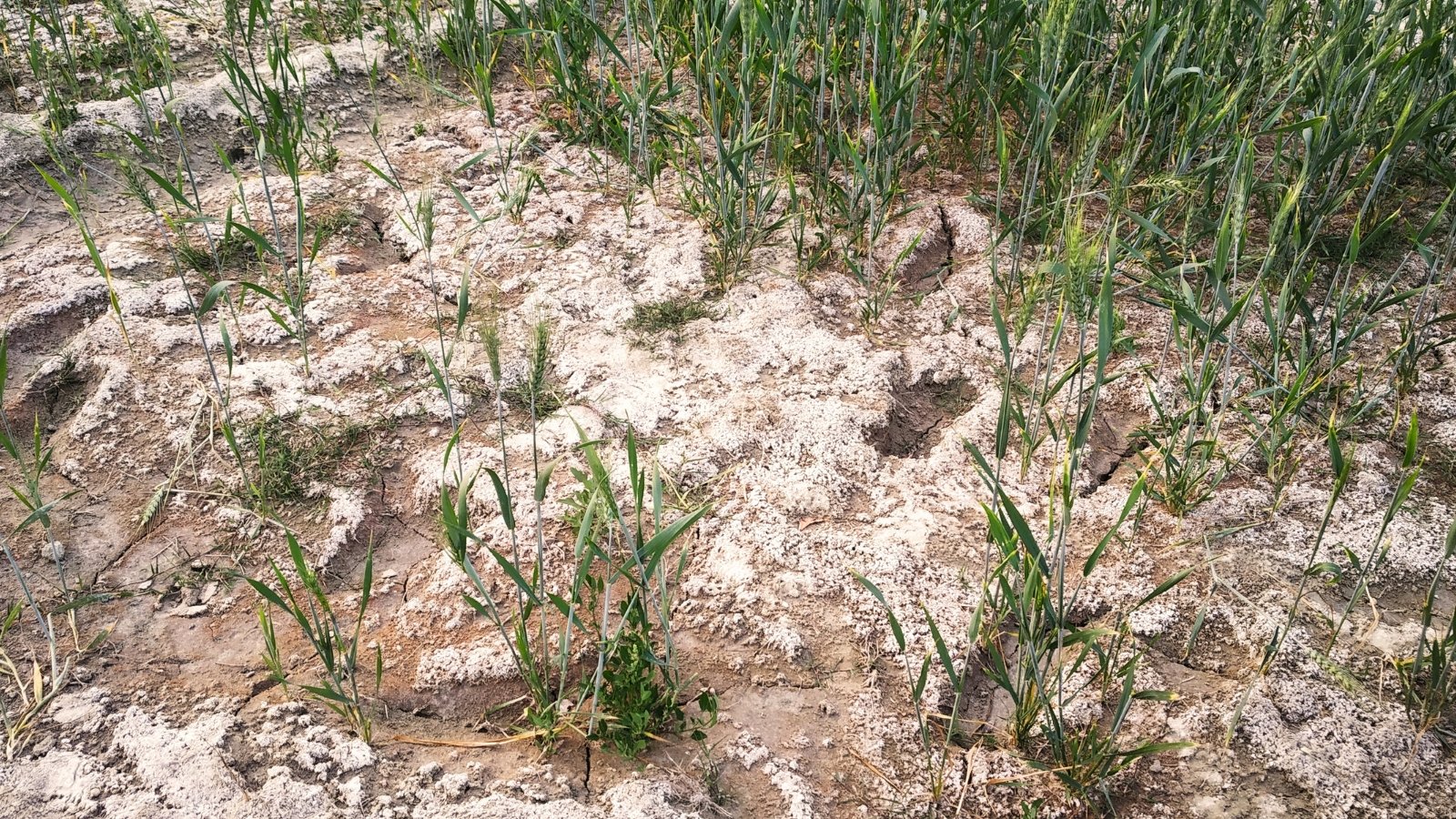

This example happens on account of osmosis. Within the occasion you’ve put salt on eggplant or tomatoes sooner than cooking or consuming, you’ve seen osmosis in movement. This mineral attracts out water, which improves the flavour and texture of water-rich fruits and veggies.
Salt has the equivalent influence on plant roots. Nonetheless as a substitute of leading to tasty meals, it leads to plant sickness or dying. This mineral attracts water away from plant roots in a course of known as exosmosis, after which it makes its method into stems and foliage by means of transpiration. This leads to nutrient deficiencies, plant cell dying, and dehydration.
What Causes Salt Burn in Vegetation?
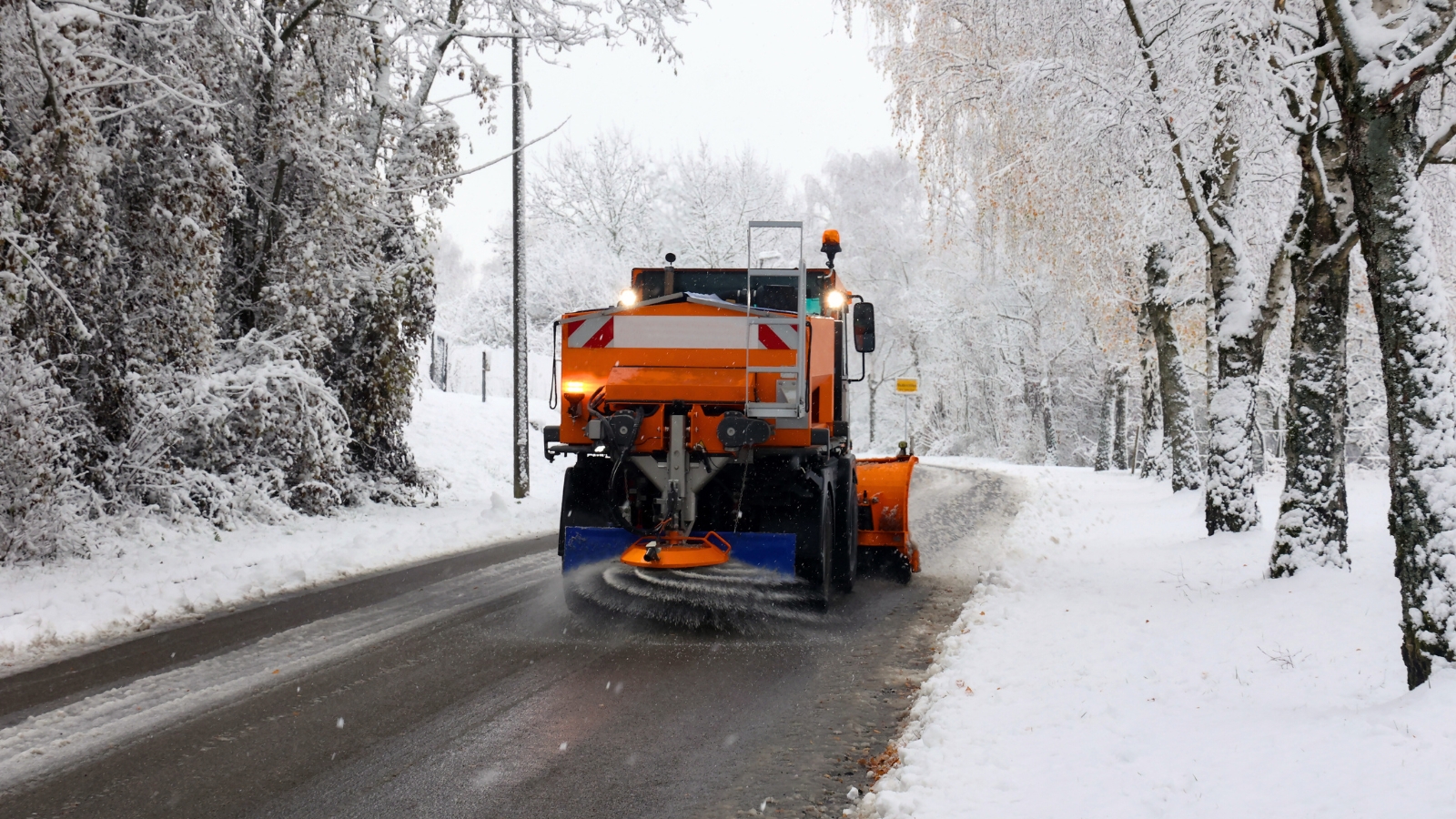

Among the many commonest causes of this example embody:
In chilly areas the place rock salt is used to de-ice roads in winter, this could be a frequent state of affairs. This mineral will get to vegetation in two strategies: through being sprayed by cars and through runoff from the street.
Chemically speaking, most fertilizers are salts. This form of burn occurs when fertilizer is utilized too constantly, in a too-strong focus, or in dry soils the place the fertilizer doesn’t have a chance to diffuse. Fertilizer burn is a sort of salt burn. Some crops, like wheat and corn, are a lot much less delicate, whereas greens and beans are most inclined. Houseplants are frequent victims of fertilizer burn.
In coastal areas, sea spray and flooding moreover trouble vegetation, notably non-native ornamentals and edibles. Ocean wind may set off leaves to dry up and drop, and sea spray and flooding set off salt to infiltrate the soil.
Many properties have water softening strategies that flip onerous water delicate. These strategies work by eradicating calcium and magnesium and exchanging them for sodium. These onerous water minerals have an effect on cleansing cleaning soap suds and go away onerous water rings and limescale. Whereas naturally delicate water, like rainwater and distilled water, is good for vegetation, artificially softened water may end up in salt burn and stress. Softened water impacts houseplants in all probability essentially the most.
Is It Preventable?
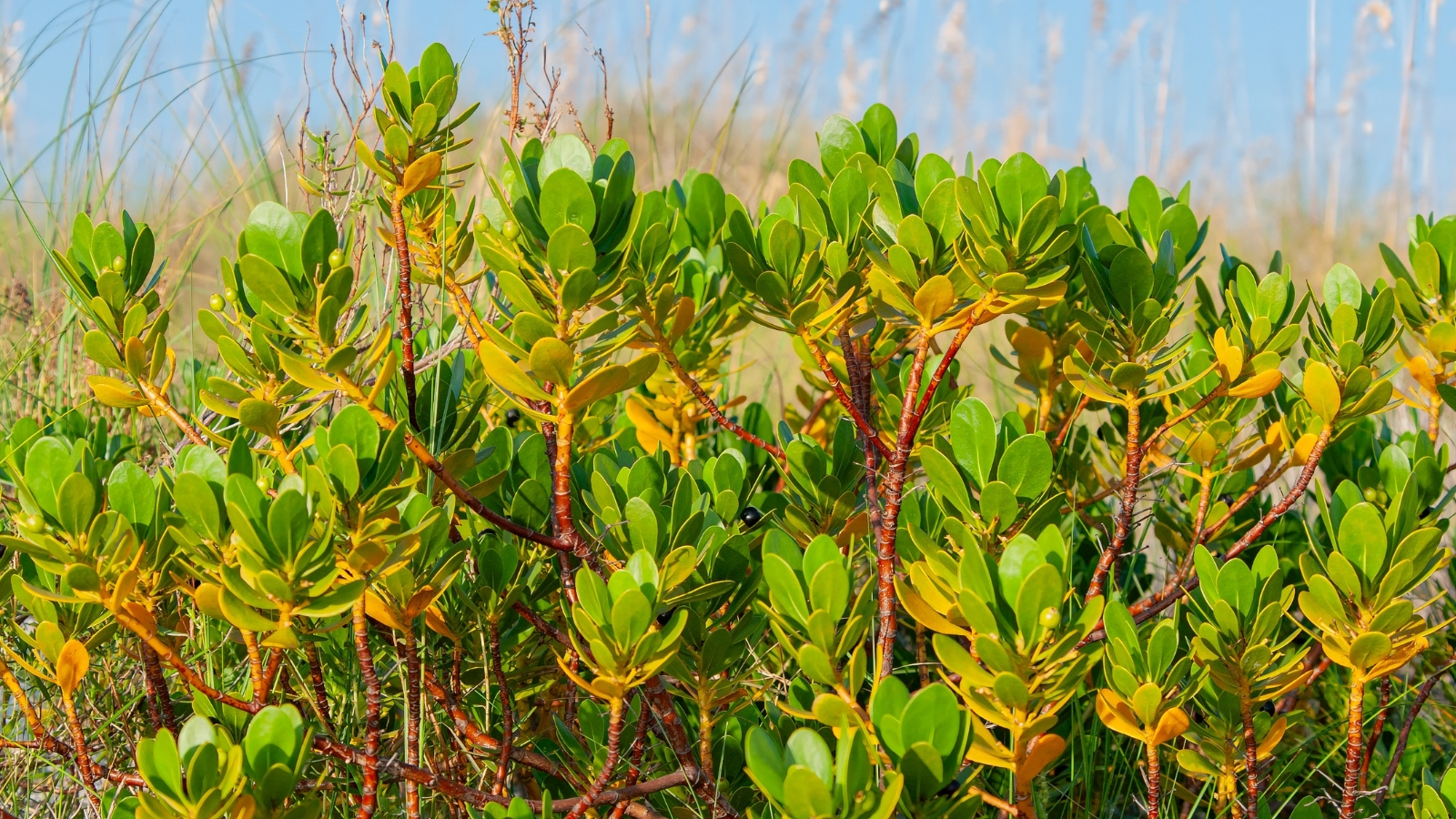

Certain. Counting on the set off, salt burn and damage could also be prevented or lessened. Proper right here’s learn to forestall each set off:
Whereas we’re capable of’t on a regular basis administration what our jurisdiction or metropolis authorities does, there are strategies to utilize a lot much less salt for de-icing. For driveways and walkways, you don’t want to create a fall hazard by using none the least bit, nevertheless you’ll want to use a lot much less. Combine abrasive provides like sand, cinders, or ash with salt to supply further grit, reducing the amount needed. Apply rigorously and steer clear of heaping piles. In spring, deeply water the soil three to 4 situations to leach it of any buildup.
You need to goal to keep up your vegetation about 50 ft away from roads that are iced. If that isn’t doable, defend your vegetation with a bodily barrier to forestall salt from reaching them. Stay away from shoveling snow from walkways onto your backyard or vegetation, or use a raised yard mattress to protect your soil. Use sodium-free de-icing merchandise, comparable to those containing calcium chloride, which might be a bit safer for vegetation (nevertheless not completely).
A lot much less is further in relation to fertilizer. When uncertain, do a soil check out and completely observe for indicators of nutrient deficiencies. Do evaluation in your vegetation’ fertilization desires, along with frequency and nutrient make-up. Pure and non-organic fertilizers can every set off salt burn, so rigorously observe the dilution instructions in your fertilizer of choice.
On account of houseplants have a finite amount of soil, they’re notably inclined to salt burn. Every fertilizer and softened water may set off this example, so it’s important to leach your vegetation every three or 4 months (further on that beneath). Plant houseplants in clear pots with out crusty white residue that accumulates on the floor of terracotta pots. Don’t allow vegetation to sit down in moist drainage trays.
Bodily limitations, corresponding to vegetation or manmade buildings performing as windbreaks, help defend in opposition to ocean winds. Within the occasion you utilize vegetation, try and design them in a tiered fashion, with grasses nearest the ocean breeze and greater bushes and shrubs closest to the yard.
Together with a whole lot of pure supplies and mulching the soil helps to ease some salt stress. However, one of many easiest methods to forestall this example in coastal areas is to plant native or salt-tolerant species; further on that later.
Usually, specific individual home softening strategies solely filter the water indoors, whereas outdoor faucets are normally nonetheless onerous, which is finest for vegetation. Within the occasion you’re unsure in case you’ve gotten softened water, select up a water check out package deal and confirm collectively along with your landlord or your native water district. Distilled or rainwater is the easiest water for houseplants.
Is It Treatable?
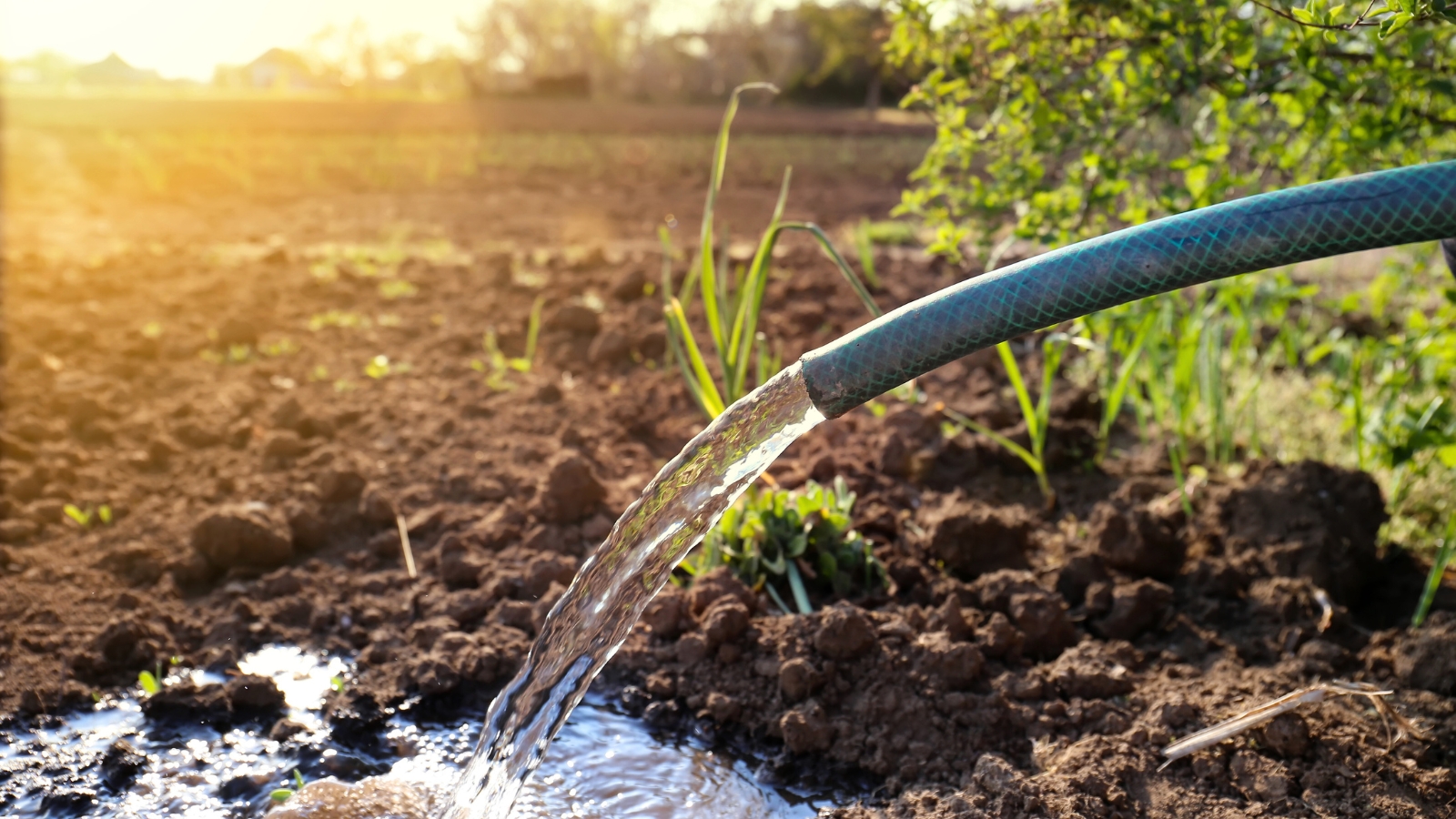

Certain. It’s normally treatable, nevertheless sooner is best. First, stop using fertilizer. The following issue to do is leach your vegetation, whether or not or not they’re in pots or inside the ground. Leaching is the strategy of eradicating soil salts.
To leach in-ground plantings, use drip tape or one different slow-watering approach to saturate the soil. By watering slowly, the water has a possibility to achieve deeper soil layers. Repeat this course of for 3 or 4 days.
For houseplants or potted vegetation, water utterly and allow water to empty, prepared 5 minutes in between waterings. As a result of the water evaporates, you may uncover a whitish crust on prime of the soil. Rigorously take away the very best inch of soil and change it with current compost.
Gypsum
One other selection for panorama plantings is to add gypsum. Use a backyard spreader or scatter gypsum in a ratio of some half pound for every sq. foot. The addition of this mineral makes sodium extraordinarily leachable.
Leftover calcium binds with soil particles and offers aeration to the underside, which is especially useful for clay soil and helps with leaching. After making use of gypsum, it’s important to irrigate the world to let the sodium leach out.
A phrase of warning on gypsum: Use might set off the leaching of various minerals and nutritional vitamins, like iron or manganese, which might be important for vegetation. It’d negatively have an effect on useful mycorrhizal fungi. I prefer to advocate solely together with gypsum if water-only leaching doesn’t work or your yard has been flooded by seawater.
Salt-Tolerant Species
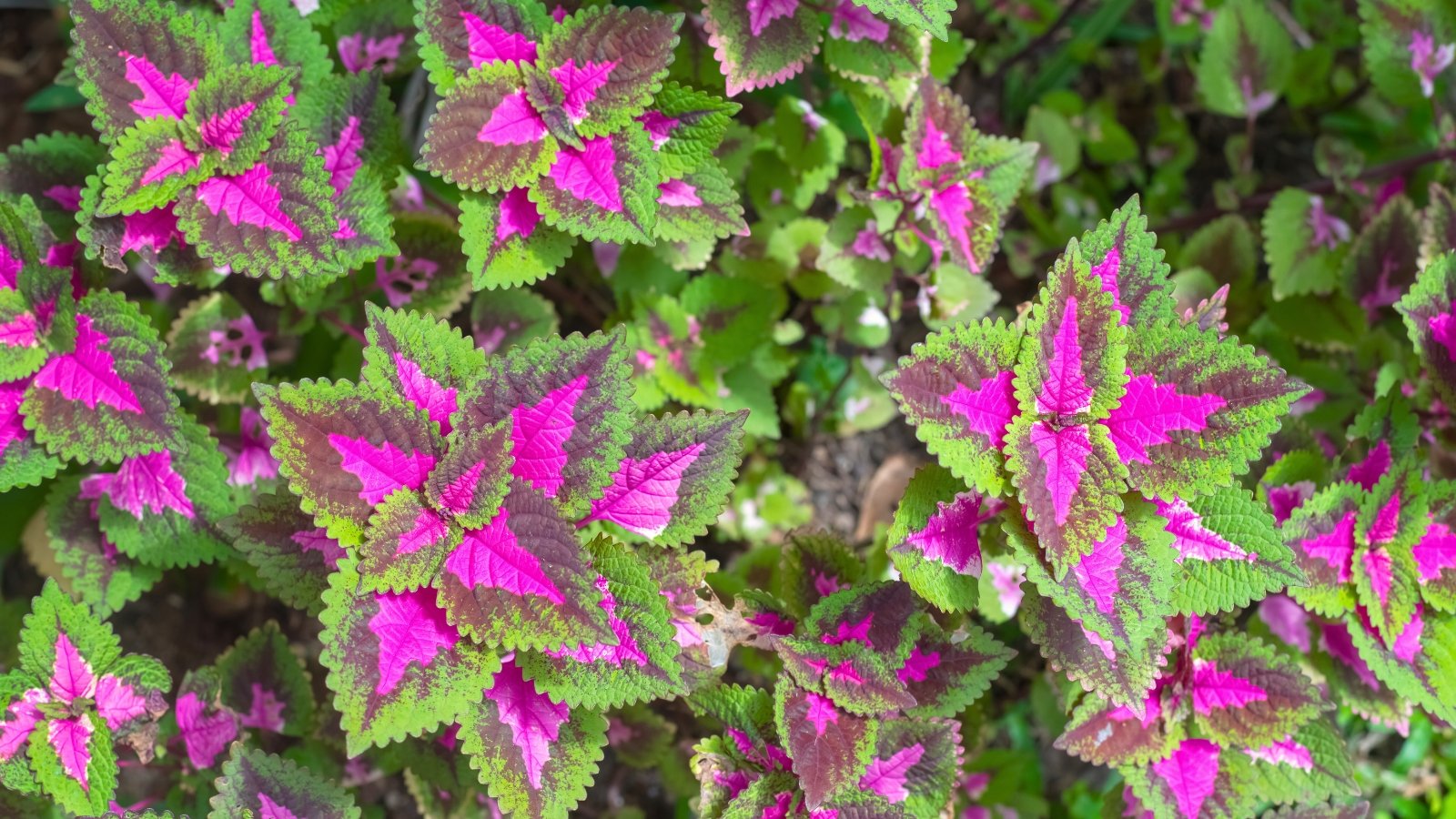

Within the occasion you cannot escape salt, it may very well be time to ponder planting some tolerant vegetation. Listed below are just a few examples of moderately to extraordinarily tolerant species:
| Timber | Shore Pine, Pinus contorta Crimson Cedar, Juniperus virginiana Northern Crimson Oak, Quercus rubra |
| Shrubs | Juniper, Juniper spp. Spanish Dagger Yucca, Yucca gloriosa Century Plant, Agave americana Rugosa Rose, Rosa rugosa |
| Grasses | Perennial ryegrass, Lolium perenne Tall fescue, Festuca arundinacea Seaoats, Uniola paniculata Muhly Grass, Muhlenbergia capillaris |
| Edibles and herbs | Cherry tomato, Solanum lycopersicum Asparagus, Asparagus officinalis Thyme, Thymus vulgaris Spanish Lavender, Lavandula stoechas Rosemary, Rosmarinus officinalis |
| Perennials | Seaside Goldenrod, Solidago sempervirens Sea thrift, Armeria maritima Blanket Flower, Gaillardia pulchella Prickly pear, Opuntia stricta |
| Annuals | Trailing Ice Plant, Lampranthus spectabilis Lantana, Lantana camara Coleus, Solenostemon hybrids Blue Daze, Evolvulus glomeratus |
Key Takeaways
In summary, salt burn makes it robust for vegetation to uptake water and nutritional vitamins. It is usually introduced on by over-fertilization (notably with synthetic fertilizers), runoff from winterized roads, gardening near the ocean, or flooding. You can leach salts from the soil with a wide range of current water. You might also use compost, mulch, raised beds, or small portions of gypsum to remediate the underside.
[ad_2]
Provide hyperlink
